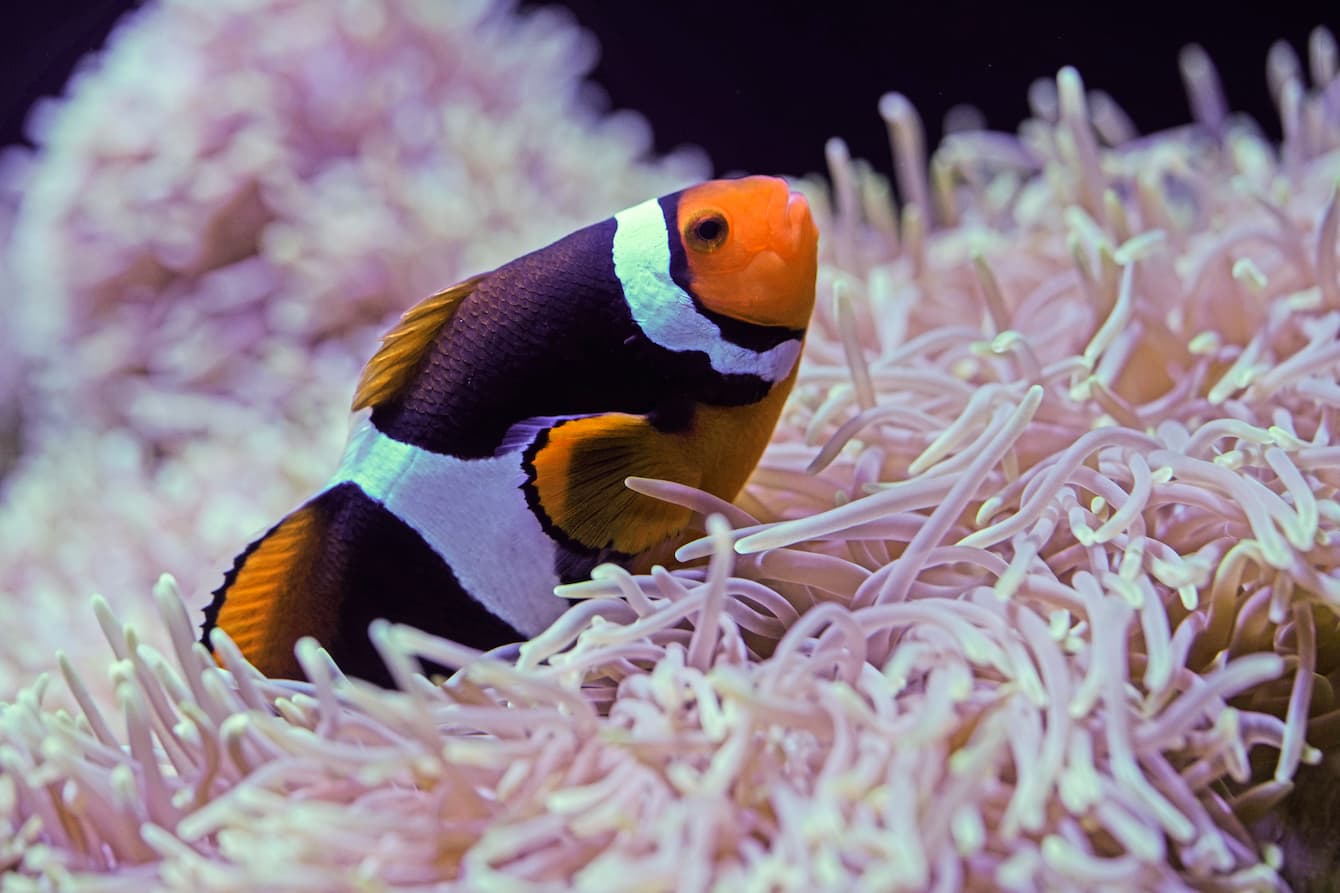Here in the Pacific Northwest, the sun may be a distant memory by now, but still burning bright is the warmth that our loved ones bring to our lives.
People tend to gather together during this time of year, often for fall and winter holidays. Braving the dark and cold to visit a loved one is a great way to make this season feel a little lighter. And if you’re someone who finds this time of year particularly challenging, leaning on your community becomes more important than ever.
In nature, different species often work together. Symbiosis occurs when two creatures live and work closely together for a long time. There are three types of symbiotic relationships: mutualism, where both creatures benefit; commensalism, where one creature benefits without harming or helping the other; and parasitism, where one creature benefits at the expense of the other.
The ocean is full of symbiosis, from tiny algae working with corals to massive whales giving rides to barnacles. Some of those relationships are also thriving at the Seattle Aquarium. Here are four mutualistic or communalistic relationships featuring Aquarium animals that remind us of the importance of helping out our community.
Clownfish and anemones
Anemones may have a prickly exterior—literally, they use their tentacles to sting, paralyze and eat their prey—but they open up for their best buddies: clownfish! Clownfish are also known as anemonefish because of the close relationship between these two reef dwellers.

Clownfish secrete a special mucus, which allows them to slip by the anemone’s defense system unharmed, giving the clownfish a safe place to live. But clownfish make great guests! They lure would-be predator fish to the anemone, which can sting and eat those fish instead. Clownfish and anemones can also enjoy scraps from each other’s meals.
You can see clownfish and anemones hanging out in the At Home in the Ocean habitat of the Ocean Pavilion.
Corals and algae
Corals are pretty popular. They have beneficial symbiotic relationships with many ocean creatures. But their closest relationship may be with the algae that live in their tissues.

Corals give these algae, known as zooxanthellae, a safe place to live. They also provide carbon dioxide, which the algae need. Algae make their own food with carbon dioxide, water and sunlight through a process called photosynthesis. In return, the algae provide their coral hosts with the sugars and other nutrients that are byproducts of photosynthesis. Zooxanthellae also give many corals their vibrant coloring!
Warming ocean temperatures can cause corals to expel their zooxanthellae, resulting in coral bleaching. While not always fatal, this can weaken corals and sometimes leads to their deaths. To learn about how to help corals, visit our corals webpage. And to see healthy, thriving corals, visit habitats across the Aquarium, including two spots in our new Ocean Pavilion: The Archipelago and At Home in the Ocean.
Moray eels and groupers
Getting together with friends for a meal is always a good time. But when you’re a moray eel, you have to hunt down dinner first. Luckily, morays have a hunting buddy in the roving coral grouper.

Researchers have observed giant morays engaging in “cooperative hunting” with roving coral groupers. The fishes kick off the hunt with a shake of their heads. The eels chase prey in the coral reefs, pushing them upwards where the groupers lurk just above the reef. The groupers return the favor by chasing prey into the “protection” of the reef and into the path of the morays.
You can see well-fed moray eels swimming and hiding in The Reef at the Ocean Pavilion. At the Aquarium, morays don’t need to hunt. Instead, our animal care team feeds them using a special protected tube that the eel enters where the other fish cannot steal their food.
Whales and barnacles
A good friend is someone who will give you a ride to the airport. Some species of barnacles take hitching a ride one step further by attaching themselves to the massive, moving bodies of whales.

The barnacles benefit by gaining access to the plankton-rich waters where both they and the whales feed. And whales make great protectors from barnacles’ natural predators, like snails and seabirds. While barnacles add extra weight to the whales—nearly a thousand pounds in some cases—whales weigh tens of thousands of pounds, so the barnacles are very light in comparison.
Much is still unknown about whale barnacles. They’re frequently observed, but it’s difficult for researchers to study them since their adult bodies are permanently attached to ever-moving marine goliaths. To see different species of barnacles (staying still!), check out habitats throughout Piers 59 and 60.
Stay connected
Coming face to face with the many marine species that work together every day is a great way to remember that life is better when we help each other. We rely on other humans—and on other members of our ecosystems—so don’t be afraid to offer or ask for help. Just like zooxanthellae, you can bring color to a loved one’s life by being there.
Plan a visit to the Seattle Aquarium to introduce yourself to these cooperative creatures. Better yet, bring a friend!


